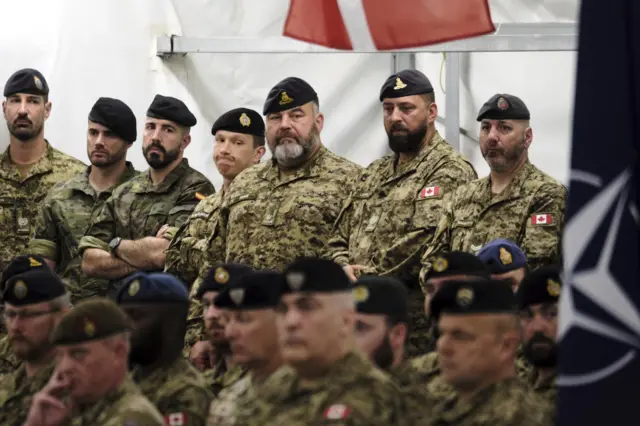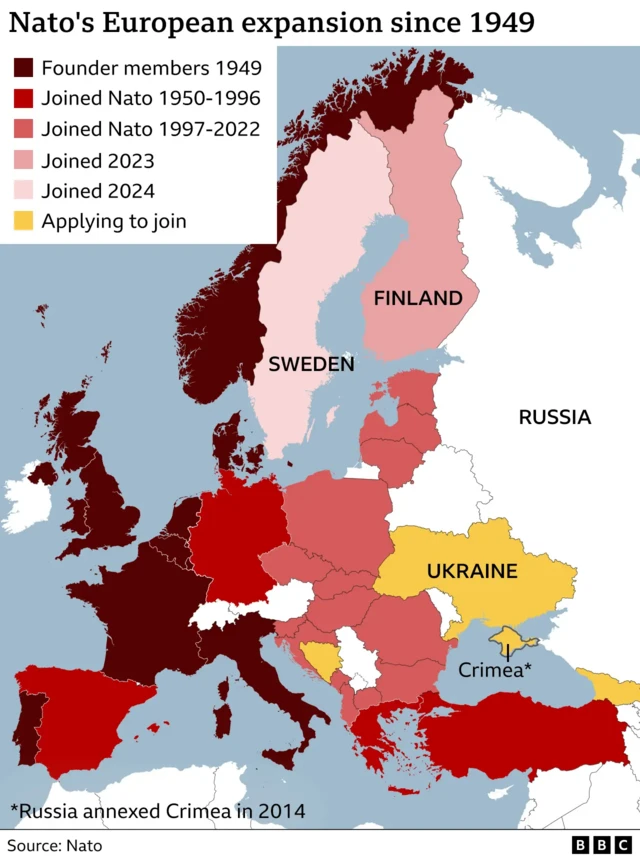Why was Nato established?published at 13:18 BST 10 July 2024
This Nato summit marks the organisation’s 75th anniversary.
Founded in 1949 four years after the end of World War Two for the collective defence of its members, it linked the security of the US with its European allies against the Soviet Union.
By 1949, Soviet dictator Stalin had managed to install communist governments in most Eastern European countries to act as a "buffer zone" to protect the Soviet Union from attack. There was a fear that the Soviet Union could do the same to countries in Western Europe.
The Berlin Blockade of 1948 convinced the West that they needed a defensive organisation, in the event of a Soviet attack on a capitalist country.
The US was concerned that communism would now spread to other countries and the formation of Nato meant that the US could place weapons in member states.
The organisation witnessed the end of communism - defeating the Soviet bloc without firing a shot. It went to war for the first time in the Balkans in the 1990s.
It then set out on a new path - so-called "out of area" operations beyond Nato's frontiers, notably its operations in Afghanistan and the wider war against terror.
 Image source, Getty Images
Image source, Getty Images


